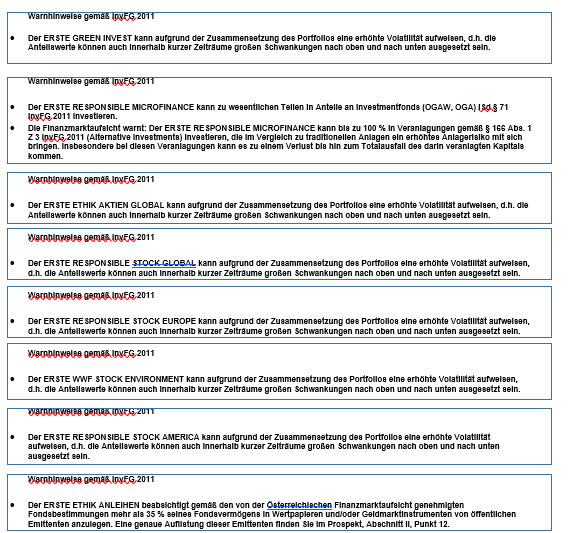Do ESG bonds fulfill their promises?
ESG bonds that are based on certain environmental and/or social projects by the issuer have been around since 2009, when they were first issued as Climate Awareness Bonds by the European Investment Bank.
In recent years, we have seen dynamic growth emerging. It started with green bonds, which were then complemented by social bonds, sustainability bonds (a combination of environmental and social projects), and sustainability-linked bonds.
The latter finance no particular projects, but the issuer aims to achieve certain environmental and/or social goals during the life of the bond. If the issuer fails to do so, the coupon is usually ratcheted up. These bonds are subject to an elevated level of risk of greenwashing or false labelling, given that it is the issuer who defines and sets the goals. This is basically a positive step if said goals are about carbon reduction, the reduction of waste, or socially measurable goals. However, one should keep a critical eye on such goals.
Shooting up issue volumes
The World Climate Conference in Paris in December 2015 led to regulatory measures as well as a significant increase in the volume of sustainable bond issues in the following years. ICMA Group (International Capital Market Association) has sketched out principles for the individual segments (green bonds, social bonds, sustainability bonds) that represent a market standard but are not obligatory for the issue of the respective bonds.
The ECB and the EU Commission have set further milestones by declaring their commitment to a sustainable capital market. The EU is planning to cover about a third of its bond programme with ESG bonds. The first issue in October 2021 was a sizeable one. The record volume of EUR 12bn created an order book of EUR 140bn.
No uniform standard
Despite the enormous growth rates, sustainable investments are still faced with the problem that they have no unified standard. A lack of transparency and consistency are points of criticism. The goal of the draft Regulation created by the European Commission in July 2021 (EUGBS – European Green Bond Standard) is to provide a regulatory framework and a point of orientation; however, it is not obligatory at this point. This standard is based on the EU Taxonomy, which defines in practical terms what is considered sustainable according to six central environmental goals.
Cumulative issue of ESG bonds on a quarterly basis (as of Q2, 2021)

But this is where it gets bumpy. Nuclear energy, for example, which accounts for a more or less substantial share of the energy mix in about half of the EU countries, is very controversial. While on the one hand the low carbon emissions and the safety of the energy supply are usually arguments on the pro side, others (like us in Austria) consider the unsolved question of final storage, the environmental contamination, and the complex depletion of radioactive materials like uranium as primary aspects on the con side, in addition to a possible reactor accident of course.
Nuclear energy and ESG bonds
Numerous utility companies (some of which actually count on the expansion of nuclear energy) have issued ESG bonds in order to strengthen their involvement in renewable energy as well. But this cannot be seen as transition or adaptation towards more sustainable activities. Instead, these companies like to put on a green (and largely carbon-neutral) hat.
2021 market share by ESG bond category

Financial service providers have also experienced a boom with regard to the issue of ESG bonds in recent years. Often, we find that this includes refinancing transactions of projects declared as sustainable that have been on the books already and thus do not indicate any imminent change in the credit policy of a financial service provider. It seems that there is a lot of peer pressure in the sector to keep up to date and position oneself prominently on the ESG market.
CONCLUSION
For investments in our impact funds, which invest in ESG bonds, it is therefore crucial to closely scrutinise not only the framework of the bond, the implementation of the principles, and the independent (clean) audit opinion, but also the issuer. Investments will only go ahead if the issuer of ESG bonds achieves an EAM ESGenius Score that places them within the investible universe and does not violate any criteria of exclusion.
Legal note:
Prognoses are no reliable indicator for future performance.
Legal disclaimer
This document is an advertisement. Unless indicated otherwise, source: Erste Asset Management GmbH. The language of communication of the sales offices is German and the languages of communication of the Management Company also include English.
The prospectus for UCITS funds (including any amendments) is prepared and published in accordance with the provisions of the InvFG 2011 as amended. Information for Investors pursuant to § 21 AIFMG is prepared for the alternative investment funds (AIF) administered by Erste Asset Management GmbH pursuant to the provisions of the AIFMG in conjunction with the InvFG 2011.
The currently valid versions of the prospectus, the Information for Investors pursuant to § 21 AIFMG, and the key information document can be found on the website www.erste-am.com under “Mandatory publications” and can be obtained free of charge by interested investors at the offices of the Management Company and at the offices of the depositary bank. The exact date of the most recent publication of the prospectus, the languages in which the key information document is available, and any other locations where the documents can be obtained are indicated on the website www.erste-am.com. A summary of the investor rights is available in German and English on the website www.erste-am.com/investor-rights and can also be obtained from the Management Company.
The Management Company can decide to suspend the provisions it has taken for the sale of unit certificates in other countries in accordance with the regulatory requirements.
Note: You are about to purchase a product that may be difficult to understand. We recommend that you read the indicated fund documents before making an investment decision. In addition to the locations listed above, you can obtain these documents free of charge at the offices of the referring Sparkassen bank and the offices of Erste Bank der oesterreichischen Sparkassen AG. You can also access these documents electronically at www.erste-am.com.
N.B.: The performance scenarios listed in the key information document are based on a calculation method that is specified in an EU regulation. The future market development cannot be accurately predicted. The depicted performance scenarios merely present potential earnings, but are based on the earnings in the recent past. The actual earnings may be lower than indicated. Our analyses and conclusions are general in nature and do not take into account the individual characteristics of our investors in terms of earnings, taxation, experience and knowledge, investment objective, financial position, capacity for loss, and risk tolerance.
Please note: Past performance is not a reliable indicator of the future performance of a fund. Investments in securities entail risks in addition to the opportunities presented here. The value of units and their earnings can rise and fall. Changes in exchange rates can also have a positive or negative effect on the value of an investment. For this reason, you may receive less than your originally invested amount when you redeem your units. Persons who are interested in purchasing units in investment funds are advised to read the current fund prospectus(es) and the Information for Investors pursuant to § 21 AIFMG, especially the risk notices they contain, before making an investment decision. If the fund currency is different than the investor’s home currency, changes in the relevant exchange rate can positively or negatively influence the value of the investment and the amount of the costs associated with the fund in the home currency.
We are not permitted to directly or indirectly offer, sell, transfer, or deliver this financial product to natural or legal persons whose place of residence or domicile is located in a country where this is legally prohibited. In this case, we may not provide any product information, either.
Please consult the corresponding information in the fund prospectus and the Information for Investors pursuant to § 21 AIFMG for restrictions on the sale of the fund to American or Russian citizens.
It is expressly noted that this communication does not provide any investment recommendations, but only expresses our current market assessment. Thus, this communication is not a substitute for investment advice, does not take into account the legal regulations aimed at promoting the independence of financial analyses, and is not subject to a prohibition on trading following the distribution of financial analyses.
This document does not represent a sales activity of the Management Company and therefore may not be construed as an offer for the purchase or sale of financial or investment instruments.
Erste Asset Management GmbH is affiliated with the referring Sparkassen banks and Erste Bank.
Please also read the “Information about us and our securities services” published by your bank.
Subject to misprints and errors.



